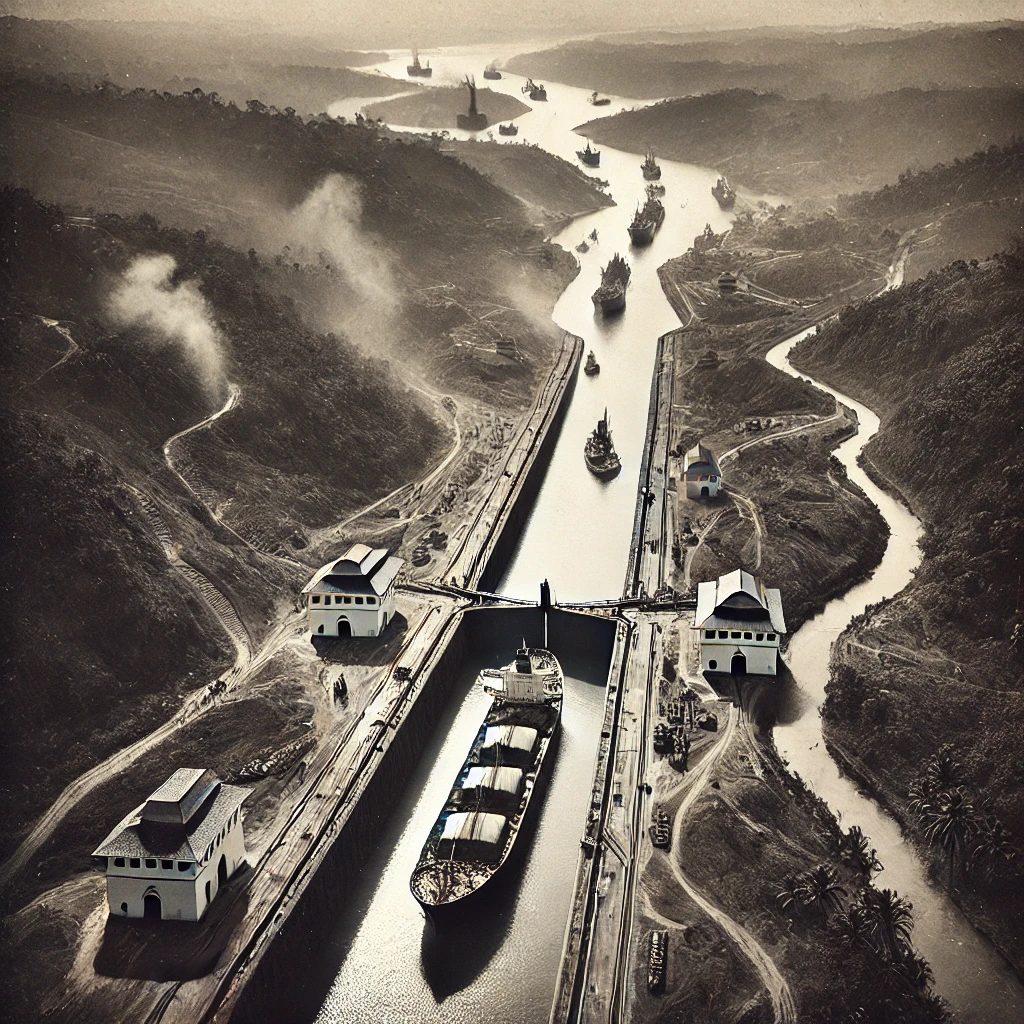On August 15, 1914, the Panama Canal officially opened to traffic, marking a monumental achievement in engineering and global trade. The canal, a man-made waterway connecting the Atlantic and Pacific Oceans, was a groundbreaking project that revolutionized maritime navigation by significantly reducing the distance and time required for ships traveling between the two oceans. The completion of the Panama Canal was the result of an ambitious effort that spanned over a decade, involving thousands of workers and overcoming numerous challenges.
The opening of the canal was celebrated with great fanfare and was attended by a variety of dignitaries, including U.S. President Woodrow Wilson, who sent a message of congratulations. The first official transit through the canal was made by the cargo ship SS Ancon, marking the beginning of a new era in international shipping and trade. The canal quickly became a critical strategic and economic asset, facilitating global maritime commerce and enhancing the connectivity of world trade routes.

The Construction Challenges
The construction of the Panama Canal was one of the most ambitious engineering projects of its time, fraught with challenges and difficulties. The project faced significant obstacles, including harsh tropical conditions, disease outbreaks among workers, and complex logistical issues. The effort required the excavation of vast amounts of earth, the construction of massive locks to raise and lower ships, and the creation of an artificial lake, Lake Gatun, to serve as a reservoir for the canal.
The project initially began under French leadership but was later taken over by the United States after the French effort failed. The U.S. government, led by figures such as Theodore Roosevelt, played a crucial role in the successful completion of the canal. The construction was completed with the help of advancements in medical and engineering practices, as well as the dedication of a large workforce.

The Canal’s Legacy and Modern Impact
The opening of the Panama Canal on August 15, 1914, had a profound and lasting impact on global trade and maritime navigation. The canal significantly shortened the maritime route between the Atlantic and Pacific Oceans, saving ships time and fuel and facilitating more efficient international trade. It played a crucial role in the economic development of the region and has continued to be a vital conduit for global shipping.
In the years following its opening, the Panama Canal has undergone several expansions and improvements to accommodate larger vessels and meet the demands of modern shipping. The most recent expansion, completed in 2016, introduced a new set of locks, known as the Panama Canal Expansion or Third Set of Locks, which allows for the passage of larger “Neo-Panamax” ships. The canal remains a critical piece of global infrastructure and a testament to human ingenuity and engineering prowess.

The official opening of the Panama Canal on August 15, 1914, marked a significant milestone in maritime history. The canal’s completion transformed global shipping by providing a more efficient route between the Atlantic and Pacific Oceans, underscoring its importance in international trade. The ongoing legacy of the Panama Canal reflects its role as a key asset in global commerce and engineering innovation.
